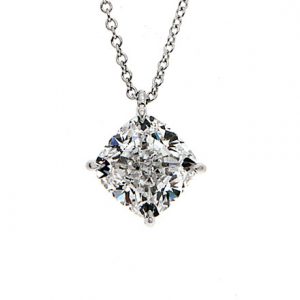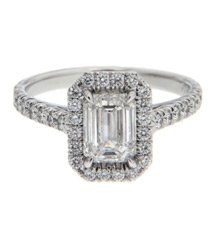
Diamonds are available in a wide variety of colors including highly prized choices like yellow, blue, and even pink diamonds. However, when it comes to the majority of gem-quality diamonds, the color evaluation of the stone is essentially based not on the presence but absence of color. A structurally perfect and chemically pure diamond has no color, just like a droplet of pure water, and as a result, fetches a much higher value. The less color in any white diamond, the more is its reflection and radiance, and consequently, the greater its worth.
GIA Color Scale
The Gemological Institute of America (GIA) offers an extensive and detailed color scale for diamonds known as the GIA Color Scale. It is recognized as authentic and enjoys universal acceptance in the diamond industry. GIA’s D-to-Z color grading system for diamonds measures the extent of colorlessness by comparing a gemstone to ‘masterstones’ diamonds of established color values. GIA assigns a color grade in a screening environment specifically designed to effectively eliminate all colors from the light source as well as the surrounding surfaces. This elaborate process allows the hue of the stone to be precisely measured.
Minor differences in the color detected in such environment are extremely tricky if not impossible to distinguish in normal environment. Adopted as a benchmark in the industry, almost all diamonds sold these days are rated according to the GIA diamond color scale, even if the stone is not certified by the GIA.
An outline of GIA Color Scale
The GIA D-to-Z color grading scale starts with the grade D, representing perfect colorless, and continues to the final grade of Z, with mounting presence of color. Majority of these precise color distinctions are so exceptionally subtle that they are completely invisible to an untrained eye. Nevertheless, these minor distinctions make quite a big difference when it comes to diamond quality and its final price. Presence of any yellow tint in a white diamond lowers its price. In layman terms, grades D, E, F are colorless; G, H, I, J are near colorless; K, L, M have faint color; N – R offer very light color; and S – Z have light color.
All GIA grade D-Z diamonds are considered as white, even though the diamonds include varying degrees of hue. Natural fancy colored diamonds that have distinctly different colors from white such as pinks, blues, and yellows are suitably graded on another separate color scale.





